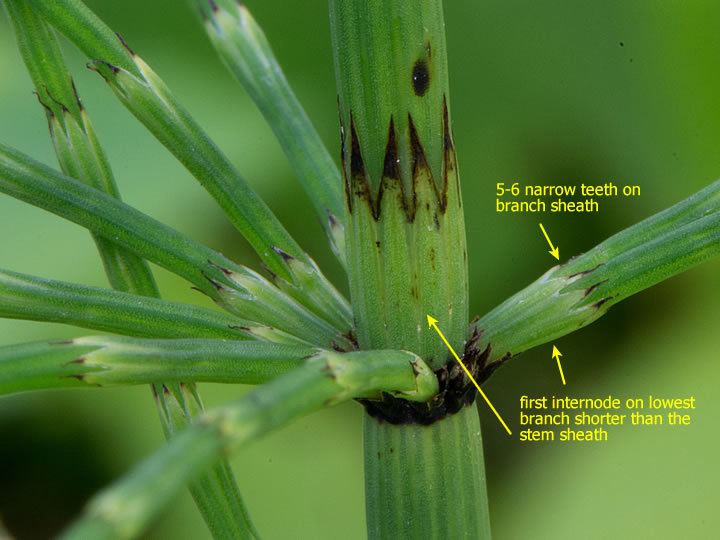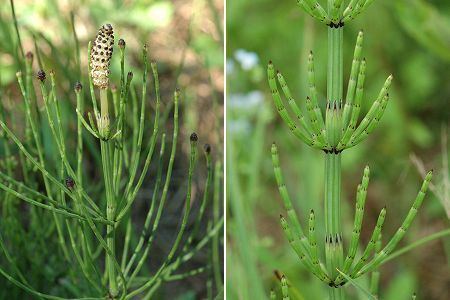Higher classification Puzzlegrass | Genus Equisetum Scientific name Equisetum palustre Rank Species | |
 | ||
Similar Puzzlegrass, Equisetum sylvaticum, Equisetum fluviatile, Equisetum pratense, Equisetum telmateia | ||
Marsh horsetail equisetum palustre 2014 04 22 2014 04 28
Equisetum palustre, the marsh horsetail, is a plant species belonging to the division of horsetails (Equisetopsida). It is widespread in cooler regions of North America and Eurasia.
Contents

Description

Equisetum palustre is a perennial cryptophyte, growing between 10 and 50 centimeters (4" to 20"), in rare cases up to one meter (3'). Its fertile shoots, which carry ears, are evergreen and shaped like the sterile shoots. The rough, furrowed stem is one to three mm in diameter with usually eight to ten ribs, in rare cases, four to 12. It contains whorled branches. The tight-fitting sheaths end in four to 12 teeth. The lower sheaths are dark brown and much shorter than the sheaths of the main shoot. The central and vallecular canals are about the same size, but the carinal channels are much smaller. The central channels measure about one sixth of the diameter of the stem.

The spores are spread by the wind (anemochory) and have four long ribbon-like structures attached to them. They sit on strobili which are rounded on the top. Marsh Horsetails often form subterranean runners and tubers, with which they also can proliferate vegetatively.
Ecology

Equisetum palustre is green from spring to autumn and grows spores from June to September. It grows primarily in nutrient-rich wet meadows. It is found in Europe and the circumpolar region up to mountainous heights. Its distribution is declining. A specific plant association in which E. palustre is found is the Juncus subnodulosus-Cirsium palustre fen-meadow.
Toxicity

Equisetum palustre is poisonous to herbivorous animals, but not to humans. It contains a vitamin B1-destroying enzyme which can lead to severe lack of coordination in horses, and the piperidine alkaloid palustrine, which leads to lameness in cattle. Both substances are stable for years.


